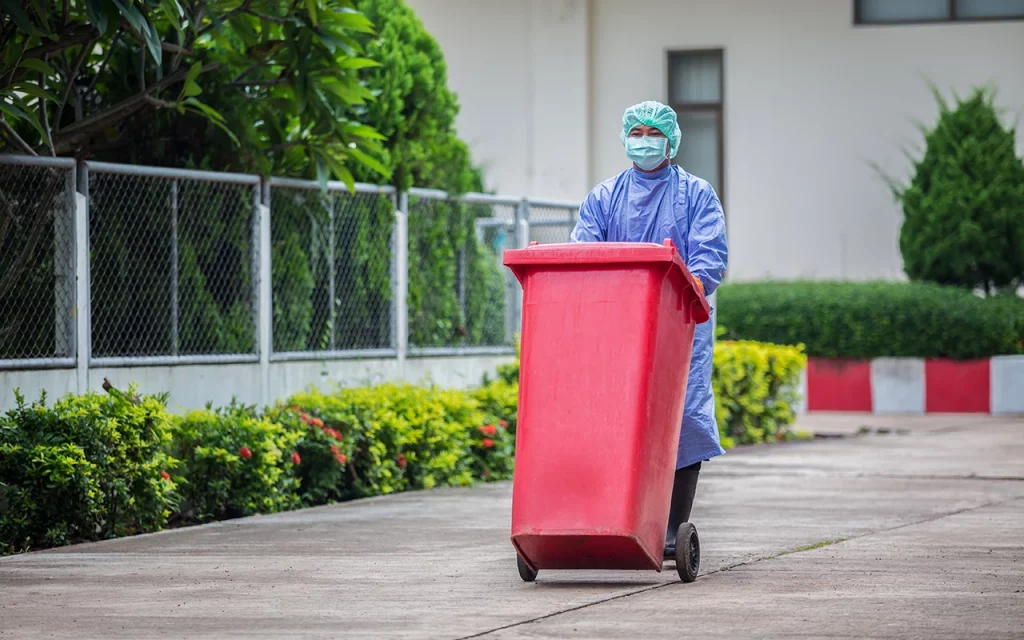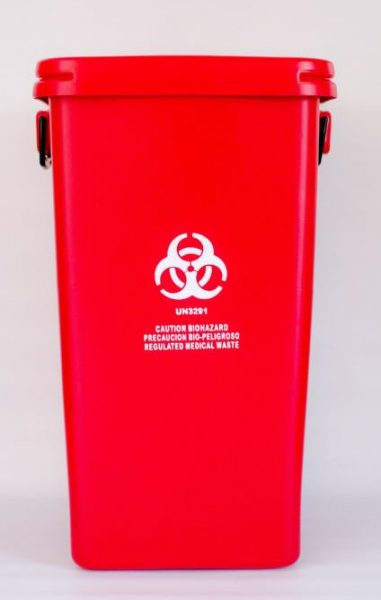Efficient and Eco-friendly Medical Garbage Disposal Solutions
In the ever-evolving area of healthcare, the problem of clinical waste disposal remains a topic of extremely important significance. As hospitals, centers, and various other healthcare centers strive to offer high quality patient treatment, they should likewise resolve the challenge of successfully and responsibly disposing of their waste.
Waste Partition Practices
Reliable waste segregation practices are vital to ensure the appropriate and secure disposal of clinical waste. Clinical waste, which includes materials contaminated with potentially contagious compounds, have to be taken care of in a way that minimizes the risk of harm to both public health and wellness and the atmosphere. Appropriate waste partition plays a critical duty in achieving this goal.
Waste segregation includes the separation of different sorts of waste based on their attributes and prospective dangers. This process guarantees that each sort of waste is treated and thrown away properly (medical waste disposal services with WasteX). It starts at the factor of generation, where healthcare centers must have designated containers and containers for different waste groups, such as sharps, contagious waste, pharmaceutical waste, and non-hazardous waste
By segregating clinical waste at the source, medical care companies can prevent cross-contamination and lower the danger of direct exposure to contagious representatives. This practice additionally helps with the recycling and recuperation of certain products. As an example, setting apart and reusing tidy plastics and glass minimizes the demand for basic materials and minimizes the environmental influence of medical waste disposal.

Autoclaving and Sterilization Methods
In order to guarantee the safe and appropriate disposal of medical waste adhering to efficient waste segregation practices, medical care facilities need to employ autoclaving and sanitation methods. Autoclaving is a widely made use of method that utilizes high-pressure vapor to decontaminate medical waste.
This entails dealing with the waste with chemicals such as ethylene oxide or hydrogen peroxide, which eliminate microbes by disrupting their mobile framework. It is important to note that chemical sterilization needs appropriate handling and disposal of the chemicals utilized, as they can be harmful to human wellness and the setting if not taken care of appropriately.
On-Site Waste Therapy Equipments
Medical care centers have actually applied on-site waste therapy systems to attend to the disposal of clinical waste in a effective and risk-free way. These systems supply a convenient and cost-effective service for managing medical waste created within the center. On-site waste therapy systems use various technologies to get rid of and treat of medical waste on-site, reducing the requirement for transportation to off-site centers.
One typically used on-site waste therapy system is the microwave technology. An additional system is the chemical disinfection modern technology, which includes dealing with medical waste with chemicals to eliminate microorganisms and lower its harmful nature. medical waste disposal services with WasteX.
On-site waste therapy systems offer a number of benefits. To start with, they eliminate the risk of medical waste being mishandled throughout transport, lowering the capacity for contamination and direct exposure to dangerous substances. Additionally, these systems help health care facilities abide by waste monitoring guidelines by giving a efficient and convenient disposal method. On-site treatment systems decrease the overall environmental influence of clinical waste by lessening transportation and the need for landfill area.
Recycling and Repurposing Campaigns
As medical care centers pursue lasting waste monitoring techniques, they are increasingly exploring recycling and repurposing initiatives as a way of reducing the environmental influence of clinical waste. Recycling and repurposing initiatives include locating cutting-edge means to reuse or transform medical waste into brand-new items or materials. This not only helps to lessen the quantity of waste that winds up in burners or land fills however likewise reduces the consumption of basic materials and energy needed for manufacturing brand-new items.
One instance of reusing in the health care field is the reprocessing of single-use medical tools. This not only minimizes the quantity of waste generated yet also saves medical care facilities considerable prices associated with buying brand-new devices.
One more reusing initiative includes the recycling of plastic containers, such as drug bottles or syringe housings. These containers can be accumulated, arranged, and sent to recycling centers where they are refined, melted down, and transformed into brand-new plastic items. This aids to conserve resources and decrease the need for virgin plastic production.
In enhancement to reusing, repurposing efforts involve finding alternative uses for medical waste. For instance, shredded paper waste from clinical documents or product packaging materials can be repurposed as bedding product for pets or as insulation material (medical waste removal near me). Natural waste such as food scraps from health care facilities can be composted and utilized as fertilizer in yards or farming fields.

Renewable Energy Solutions
One effective strategy to reducing the environmental impact of healthcare operations entails applying eco-friendly energy options. Healthcare centers, such as hospitals and clinics, consume significant quantities of power for different purposes, consisting of lights, heating, cooling, and running clinical devices. By transitioning to renewable resource resources, these facilities can considerably reduce their carbon impact and add to a more sustainable future.

Carrying out eco-friendly energy services in medical care centers not just decreases you could try this out greenhouse gas discharges yet additionally offers long-lasting expense financial savings. While the first investment in renewable resource framework might be greater, the long-term operational costs of renewable energy systems are considerably lower contrasted to standard fossil fuel-based power resources. In addition, renewable resource systems are dependable and can supply a steady and nonstop power supply, ensuring continuous healthcare solutions also throughout power blackouts or emergency situations.
Verdict
In verdict, applying reliable and eco friendly medical waste disposal remedies is necessary for maintaining a lasting healthcare system. By taking on waste segregation practices, autoclaving and sanitation strategies, on-site waste treatment systems, reusing and repurposing initiatives, and eco-friendly energy options, medical care facilities can dramatically decrease their ecological impact.
It starts at the factor of generation, where healthcare facilities need to have designated bins and containers for various waste categories, such as sharps, contagious waste, pharmaceutical waste, and non-hazardous waste.
In order to make certain the correct and safe disposal of medical waste complying with reliable waste segregation practices, health care centers have to utilize autoclaving and sterilization strategies.Healthcare facilities have applied on-site waste therapy systems to deal with the disposal of medical waste in a efficient and risk-free way. On-site waste therapy systems make use of various technologies to treat and get rid of of medical waste on-site, reducing the requirement for transport to off-site centers.
As medical care centers make every effort for lasting waste monitoring practices, they are increasingly exploring recycling and repurposing why not check here initiatives as a means of decreasing the environmental effect of medical waste. - medical waste removal service